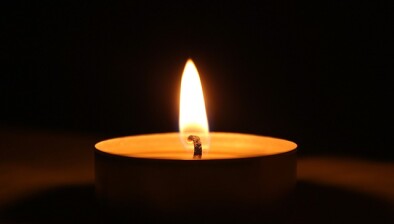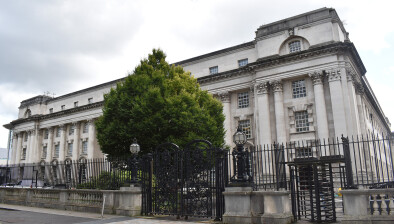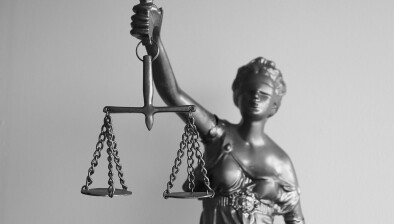Jude Murray BL: Does the Institutional Burials Act respect the dead or bury our shame?

The Institutional Burials Act 2022 commenced on 15th July 2022.1 It is a remarkable new law that literally creates “groundbreaking” powers. Its three goals in relation to “manifestly inappropriate burials”2 on institutional land are to: (i) identify human remains, (ii) make final arrangements for human remains, whether or not the remains are identified, and (iii) memorialise sites, where memorialisation is deemed more appropriate than excavation.
On closer inspection, the Act constrains an already extremely low chance of identifying remains, so what is the real point of the Act? In an attempt to undo the past, it will disturb the dead and makes provision that unidentified remains may be dug up again.3 The following takes a closer look at the Act.
Mother and baby homes
The Act is borne of the Tuam mother and baby home scandal that was unearthed by a local historian.
Through her research, Ms Catherine Corless discovered 796 death certificates for babies and infants who died while in the care of a Bon Secours institution in Tuam between the years of 1922 and 1960. She found no burial records, which suggested that the children were not buried legally.
It is believed that similar sites may exist at Bessborough in Cork, Sean Ross Abbey in Tipperary, Castlepollard in Westmeath, Temple Hill in Dublin, and elsewhere in Ireland.
The Act’s powers
The Act creates powers to do 13 things:
- The government can issue an order directing the establishment of an Office of a Director of Authorised Intervention. A Director will be a corporation sole, can sue and be sued.4 There will be an Office per site investigated, e.g. “The Office of the Tuam Director of Authorised Interventions”, “The Office of the Bessborough Director of Authorised Interventions” and so on. After an intervention, an Office of a Director will be dissolved.5
- The Act empowers a Director to excavate land associated with institutions “owned, operated, controlled or funded by a public body” where it is suspected that “manifestly inappropriate” burials took place on that land.
- A Director will have power to access and carry out works on such land.
- A Director will pay compensation for “interference with an interest or right over such land”.
- A Director will carry out remedial works after such excavations.
- A Director will recover human remains that were buried on such land in a “manifestly inappropriate manner”.
- A Director will carry out post-recovery DNA analysis of human remains.
- To assist post-recovery analysis, the Director can establish an identification programme.
- On behalf of a Director, Forensic Science Ireland (FSI) will create two databases, a DNA (Historic Remains) database and a related database for personal information.
- The Director will make final arrangements for recovered human remains.
- A Director will establish an Advisory Board, to advise and assist in the carrying out of the Director’s functions.
- The Director will have power to test samples after an identification programme has ended, for example should there be developments in DNA analysis techniques.
- The Act amends two other Acts — the Taxes Consolidation Act 1997 and the Planning and Development Act 2000.6 7
When the government can and cannot order a site intervention
“Yes”, if four hurdles cleared: burials, institution, resident, manifestly inappropriate
Part 2 of the Act (sections 7 to 32) is titled “Directors of Authorised Interventions”.
Section 7(1) states that the government “may” (i.e. doesn’t have to), with the consent of the Minister for Public Expenditure and Reform, order a minister to establish an Office of Director of Authorised Intervention for a specified period of time and for specified land (by reference to a map appended to the order).
Section 7(3) states that the government may make such an prder where they are satisfied that (i) “burials have taken place”, (ii) “on land associated with an institution”, (iii) “of persons who died while resident at the institution” and (iv) the burials were “manifestly inappropriate”.
“No”, if beneath or within 10 metres of dwellings
Section 7(3)(b) states that the government may only make such an order where they are satisfied that works would not extend “within the curtilage or 10 metres (whichever is lesser) of any dwelling on the land”; in other words, a Director cannot dig under or within 10 metres of a dwelling.
“No”, if under investigation of An Garda Síochána or subject of a coroner’s inquest
Section 7(4) states that the government “shall not” make such an order where there is an ongoing investigation by An Garda Síochána into “circumstances surrounding human remains found on the land” or where there is an ongoing inquest by the coroner under the Coroner’s Act 1962.
“No”, if a graveyard or if may disturb otherwise appropriately buried human remains
Section 7(4)(c) states that the government shall not make an order if the land comprises in whole or in part “burial ground for the purposes of…the Local Government (Sanitary Services) Act 1948” or “could not be excavated without disturbing appropriately buried human remains that the Government consider, in all the circumstances, should not be recovered”.
This is balanced by section 10(l)(i), which gives a Director the right to carry out forensic excavation and recovery of human remains that were “not buried in a manifestly inappropriate manner but which the government consider should, in all the circumstances, also be recovered”. In other words, the government cannot make an order under section 7(1) for land where there are legitimate burials e.g. a graveyard, or where there are “appropriately buried remains”, unless the government consider that such remains should be recovered.
“No”, if unsafe, unreasonably difficult, or before 1922
Section 7(4)(e) states that no such order shall be made if “recovery of human remains from the land would be unsafe or unreasonably difficult”. Section 7(4)(f) states that no such order shall be made if there is evidence that the last known burial in the land was carried out before 1 January 1922. In other words, the Act only applies to burials that occurred after 1 January 1922.
“No”, if memorialisation is more appropriate
Section 7(5) states that the government “may refuse” to make such an order where “other substantive reasons exist which cause the government to form the view that memorialisation of the burials on the land… is more appropriate”.
“Manifestly inappropriate burials” defined
Taking into account societal norms and mores when such institutions existed, section 8 of the Act defines “manifestly inappropriate burials” as being where human remains are “uncoffined”, where their burial breached Burial Grounds Regulations “at the time of such burial”, are buried “in a way that would not reasonably be considered to provide dignified interment” or are “buried collectively and in a manner or in a location that is repugnant to common decency and would reasonably have been so considered at the time the burials took place”.
Section 8(3) lists factors that the government must consider when deciding whether to order the creation of an Office of Director of Authorised Intervention. Its decision must be proportionate and weigh up factors including public health, “the need to accord dignity to persons buried in the land”, “the need to respect views of relatives of persons buried in the land”, potential impact to residents whose dwellings adjoin the land, archaeological features that may exist, social and economic interests of the State, and alternative options.
Director’s functions
Section 10 (a-l) lists a Director’s functions. Under section 7(1) and 7(6), these functions can be added to or detracted from by the government.
A Director will set up and staff its office. He or she will identify and engage necessary expertise to assist with the performance of the Director’s functions. A Director will seek consent of the owner and occupier of relevant land or apply to court for an order to carry out works on principal burial land, ancillary burial land or ancillary land. A Director will make final arrangements for human remains recovered from principal burial land. A Director will agree compensation. A Director will provide regular updates to relatives, stakeholders and the public, where deemed appropriate. She or he will carry out an identification programme.
Director’s power to compel information
Sections 27 to 29 enables a Director to compel an information source to supply information. Section 27(5) defines an “information source” as being a Department of State, a public body who has or had a relevant role in relation to the institution, anyone who holds documents in relation to an institution, a local authority, a religious organisation, a body other than a company established by Statute, or a company owned wholly or partly by the State.
Under section 27, a Director will send a notice to an information source outlining the information required. Under section 28, if a Director deems that an information source has not complied with such a notice, a Director can apply to the District Court for an order to compel the production of information or documents.
Section 29 enables a Director to ask the Child and Family Agency (CFA) to supply information contained in the database and related records of the Commission of Investigation into Mother and Baby Homes. Section 29(2) states that the CFA “shall comply” with such a request, so it ought not be necessary for a Director to make a court application to compel the CFA to supply such information.
Three types of land
Part 5 of the Act relates to that all important subject in Ireland — land. The Act defines three types of land: principal burial land, ancillary burial land, and ancillary land.
Principal burial land is land associated with an institution where burials have taken place of persons who died while resident at the institution and which were manifestly inappropriate, and which is the subject of an order made by the government under section 7 of the Act.
Ancillary burial land is “relevant residential land adjacent to principal burial land” and “where burials, associated with burials on that principal burial land, have taken place”.
Ancillary land is defined as “land that is not principal burial or ancillary burial land and on which it is proposed to carry out related activities”.
Accessing land and carrying out works: by consent or by court order
Under section 83, a Director must get consent from the landowner and occupier before proceeding with works. If consent is not given, a Director can apply for a court order to override non-consent.
Section 83(2) states that a Director may not proceed with works unless a statement of compensation has been issued to the owner and occupier. If an owner and/or occupier appeals a statement of compensation, section 83(3) states that a Director may proceed with works while such an appeal is under way.
Section 84 states that where a public body is the owner or occupier of principal or ancillary burial land, that public body will be deemed to have consented to the carrying out of works.
Under section 86, a Director can apply to the Circuit or High Court for authorisation to carry out works on the land where the owner or occupier or both have not consented within 28 days of the Director’s Notice of Intention to carry out works on principal burial land.
If the land is worth less than €3 million, the Director would apply to the Circuit Court. If the land is worth more than €3 million, the Director would apply to the High Court, unless both parties agree to the Circuit Court having jurisdiction. Appeals of such applications can only be made on a point of law, as per section 86(3).
Compensation
Section 91 to 94 of the Act relate to compensation. Section 91 covers scenarios where relevant works or related activities are estimated to take less than or more than 4 weeks. If the works will take less than four weeks, a statement of compensation will state how the compensation was calculated.
If an owner or occupier refuses the offer of compensation, they can apply to the Circuit Court under section 94 for a variation of the amount of compensation. If an owner or occupier does not reply to an offer within 28 days, the offer will become binding. Section 91(4) further clarifies that a compensation offer “shall be binding” if the person accepts or fails to respond to the offer within 28 days or refuses the offer and does not apply to the Circuit Court within the time limits outlined in Section 94.
A person other than an owner or occupier can apply for compensation
Section 92 states that a person other than an owner or occupier, who has an interest in or right over principal burial land, ancillary burial land or ancillary land may apply to the Director for compensation.
How compensation is calculated
Section 93 outlines how offers of compensation are calculated and paid. It will be based on the estimated length of time the relevant works will take, the extent of the works, and disturbance to business or trade. Section 93(2) states that compensation shall be payable to a public body “in respect of any loss or costs incurred as a result of the works or access over the land concerned”.
Appealing an offer of compensation
Section 94 relates to applications to the Circuit Court by people who refuse an offer of compensation. The person must have actively refused the offer. They can then apply to the Circuit Court for a variation of the amount of compensation. Section 94(3)(b) entitles the Circuit Court to order that the offer of compensation is appropriate or, if the Court deems the offer to be inappropriate, it can vary the compensation offer.
Remedial works
Section 95 states that the Director must carry out remedial works not later than six months following the completion of forensic excavation and recovery of principal burial land or ancillary burial land or related activities on ancillary land. All such works are deemed “exempted” and do not require planning permission.
Forensic excavation, recovery and post-recovery analysis of human remains
Parts 3 and 4 of the Act relate to “forensic excavation and recovery and post-recovery analysis of human remains”.
Section 34 states that, while relevant works are under way, no licences of exhumation can be granted. Section 35 states that the Director will ensure that excavation and recovery of human remains will follow international standard best practices. Having arranged for excavation and recovery, the Director will arrange for post-recovery analysis of the remains, which may include sorting remains that are “co-mingled” into “individual sets of remains as far as possible”.
Under section 36, if activities of section 35 reveal evidence that the human remains met “death in violent or unnatural circumstances” or “are not those of a person who died while resident at the institution concerned”, the Director shall notify An Garda Siochana and the coroner.
On such notification, under section 36(3), the coroner can either allow the Director to proceed with the works or direct the Director to suspend the works if “necessary for the purposes of making a determination as to the cause of death”, that being the key function of a coroner.
Section 37 states that, following a determination by a coroner of the cause of death, a direction can be made by An Garda Siochana under section 5 of the Criminal Justice Act 2006 to designate the land as a crime scene for “the period specified in the direction”.
Identification programme and familial links
Part 4 deals with identification of human remains recovered. Authorised persons (authorised by the Director) will take samples from “human remains or from relevant persons, or from persons for the purposes of elimination”.
Section 46 defines the purpose of an identification programme as being “to establish whether there is a familial link between relevant persons or applicable persons and unidentified human remains” and “where a familial link is established, to identify the person whose remains have been recovered”.
Section 42 states that a “eligible family member” must notify the Director of their interest in participating in the programme. They must “at the same time, furnish a letter of non-objection to his or her participation from another eligible family member or members”.
Section 43 allows eligible family members to object to the participation of another eligible family member in an identification programme.
Section 46(6) states that the Director shall, having consulted with the advisory board, continue with an identification programme where s/he is satisfied “that there are family members of deceased persons believed to be buried in the principal burial land and, if applicable, ancillary burial land, still alive who may wish to participate in the Programme” and “FSI has determined that the quality of samples forensically tested by it is sufficient to generate DNA profiles and of a sufficient standard to enable DNA profile comparison”.
Section 46(12) expands to say that where a decision has been made not to continue with an identification programme — i.e. the conditions of section 46(6) have not been met — the Director shall “arrange for the destruction of samples taken and the deletion of DNA profiles generated by FSI from those samples, and make final arrangements for the recovered human remains”.
Participation in an identification programme, final arrangement wishes, and capacity
Section 48 covers participation in an identification programme. To participate, the Director must be satisfied that an applicant is an eligible family member, has provided evidence that they are an eligible family member, and the Director has considered grounds for any objection made.
Under section 48(3)(d), a participant can state their wishes in writing to the Director “as to the final arrangements for recovered human remains in respect of which a familial link is established, and should he or she become incapacitated before such arrangements are made”.
Under section 48(4), the Director “shall notify an applicant in writing of the Director’s determination as to whether or not the person may participate in an identification programme”. Section 48(5) states that, where a Director notifies an applicant that they may not participate, the Director must set out in writing reasons for the determination and inform the person of their right to appeal under section 81 of the Act.
Section 48(7) permits the Director to request a medical certificate that an applicant has “the necessary capacity to give consent” to participation in an identification programme.8
Under section 50, a Director shall notify a relevant person in writing if a familial link, on the balance of probabilities, has been established or that, on the balance of probabilities, analysis does not suggest a familial link. Section 50(3)(iii) states the Director will confirm that the person can appeal the finding that there is no familial link, under section 81 of the Act.
Final arrangements
Section 57 of the Act deals with “final arrangement for recovered human remains”. Section 57(1) states that “a Director shall make final arrangements for human remains recovered from principal burial land and, where applicable, ancillary burial land”, where there has been an identification programme, as soon as practicable after a familial link has been established or as soon as practicable “after it becomes known that it is not possible to establish a link”.
Where a familial link has been established, the Director will “at the request of the highest ranking family member who is alive and not incapacitated” return the remains to him/her or arrange for the reinterment at a place selected by the highest ranking family member. Section 57(6) defines “highest ranking family member” as meaning, in descending order, “spouse, civil partner, parent, child, sibling, half-sibling, grandparent, grandchild, aunt and uncle, niece and nephew (whether whole or half blood), grandniece and grandnephew”.
Where this is not possible e.g. there are no surviving family members or wishes stated, a Director will make final arrangements having regard to “dignity and known religious practices of the deceased” and “the condition of the remains”.
Section 57(3) states that, where a familial link is not established, a Director shall make final arrangements having regard to “wishes (if any) of persons who consider themselves, with reasonable cause, to be family members of persons believed to have been buried at the principal burial land concerned or any ancillary land”, the dignity of the deceased and the conditions of the remains.
Appeals
Section 81 deals with appeals. Under section 81(1)(a), a person can appeal a Director’s determination that the person is not eligible to participate in an identification programme. Under section 81(1)(b) a person can appeal a Director’s determination that “genetic and non-genetic data available are not sufficient to suggest a familial link”.
An appeal must be made within eight weeks from the date of the determination to the relevant minister who then shall within four weeks of receipt of that notification appoint an independent adjudicator to determine the appeal. The adjudicator will hold an oral hearing and either confirm the determination or overturn the determination and substitute their own determination.
Judicial notice
The Schedule of the Act confirms that judicial notice shall be taken of the seal of a Director and any document carrying its seal “shall, unless the contrary is proved, be received in evidence and be deemed to be such instrument without further proof”.
Conclusion
In Ireland, it is possible that any one of us could have a mother, grandmother or great grandmother who was sent away in secret to see out her “confinement”. It is possible that you are unaware of such a legacy.
In order to identify human remains, DNA is extracted from the human remains and matched with samples from living persons, but this Act limits the pool of living DNA to “eligible family members”. Even expanding identification programmes to include people from the area surrounding institution sites would not be enough. To be effective, it would need to be a nationwide, even global, identification programme, whereby anyone could donate a DNA sample for comparison.
With such restrictions built into this Act, it would appear to favour memorialisation over excavation. If that is the case, will Offices of Directors of Authorised Interventions be an exercise in futility?
We should not try to re-write the past. It would be better to mark the spot and say that those people will never be forgotten.
Footnotes
1 S.I. No. 356/2022 - Institutional Burials Act 2022 (Commencement) Order 2022.
2 Section 8(1) of the Act defines “manifestly inappropriate burials”.
3 Section 57(4) of the Act states that, where a familial link is not established, final arrangements for such remains “shall not include cremation”.
4 The Act’s preamble states that a Director of Authorised Intervention will be a “corporation sole”. Section 9(3) states that a Director “shall be a corporate sole” with perpetual succession and an official seal. The Act’s Schedule states “[a] Director shall have the power to sue and may be sued and shall…have the power to acquire, hold and dispose of land, an interest in land or any other property”.
5 Part 6 of the Act deals with “Dissolution Day”, the day after the last day “on which [an] Office of a Director continues in operation”, when functions, assets, liabilities and records of a Director will be transferred to a relevant Minister.
6 Section 26 of the Act adds a Director of Authorised Interventions to the list of Accountable Persons listed in Schedule 13 of the Taxes Consolidation Act 1997. Accountable Persons account to the Government for payments they have made with the ‘Public Purse’ for services, such as to subcontractors.
7 Section 97 of the Act amends section 4 of the Planning and Development Act 2000, meaning that works carried out by a Director will be an “exempted development” and will not require planning person.
8 Capacity has the same meaning as it has in the Assisted Decision-Making (Capacity) Act 2015.









